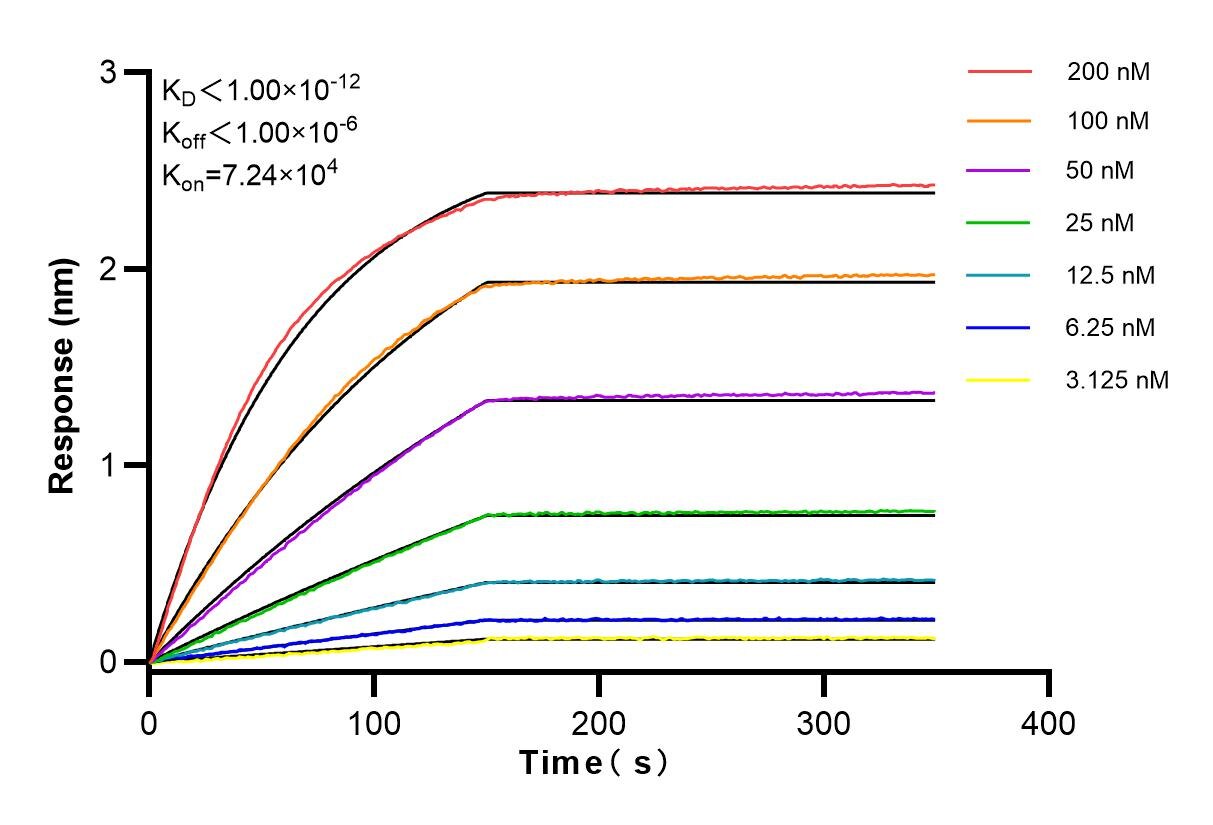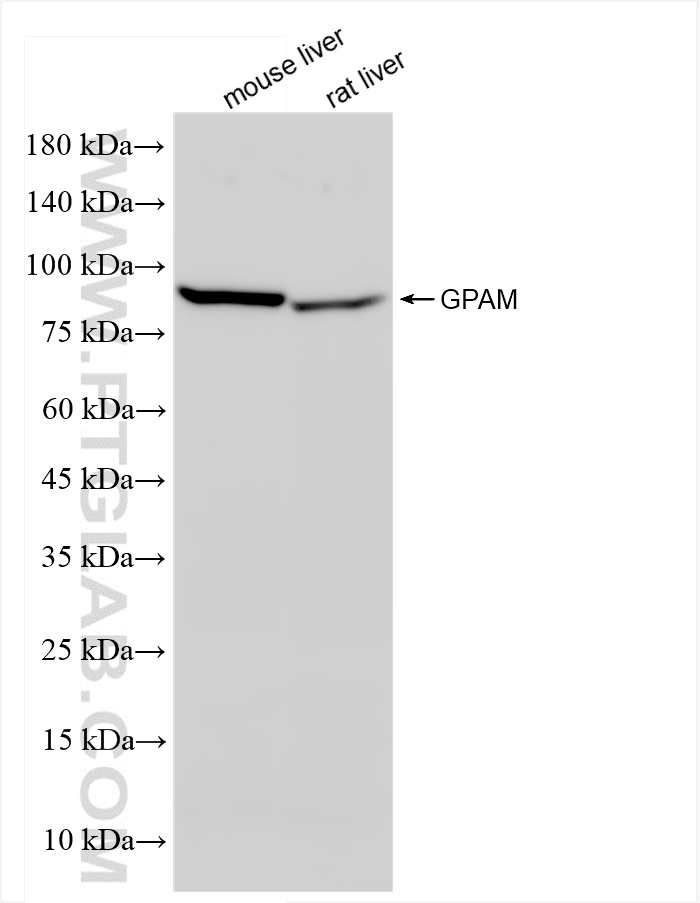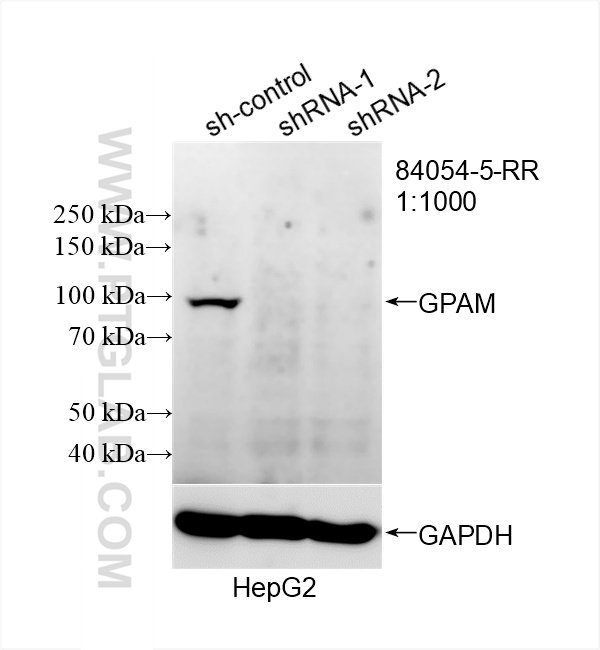Tested Applications
| Positive WB detected in | mouse liver tissue, HepG2 cells, rat liver tissue |
Recommended dilution
| Application | Dilution |
|---|---|
| Western Blot (WB) | WB : 1:1000-1:6000 |
| It is recommended that this reagent should be titrated in each testing system to obtain optimal results. | |
| Sample-dependent, Check data in validation data gallery. | |
Product Information
84054-5-RR targets GPAM in WB, ELISA applications and shows reactivity with human, mouse, rat samples.
| Tested Reactivity | human, mouse, rat |
| Host / Isotype | Rabbit / IgG |
| Class | Recombinant |
| Type | Antibody |
| Immunogen | GPAM fusion protein Ag3120 Predict reactive species |
| Full Name | glycerol-3-phosphate acyltransferase, mitochondrial |
| Calculated Molecular Weight | 828 aa, 94 kDa |
| Observed Molecular Weight | 90-92 kDa |
| GenBank Accession Number | BC030783 |
| Gene Symbol | GPAM |
| Gene ID (NCBI) | 57678 |
| RRID | AB_3671622 |
| Conjugate | Unconjugated |
| Form | Liquid |
| Purification Method | Protein A purification |
| UNIPROT ID | Q9HCL2 |
| Storage Buffer | PBS with 0.02% sodium azide and 50% glycerol , pH 7.3 |
| Storage Conditions | Store at -20°C. Stable for one year after shipment. Aliquoting is unnecessary for -20oC storage. 20ul sizes contain 0.1% BSA. |
Background Information
GPAM (Glycerol-3-Phosphate Acyltransferase, Mitochondrial) is a Protein Coding gene. This gene encodes a mitochondrial enzyme which prefers saturated fatty acids as its substrate for the synthesis of glycerolipids. This metabolic pathway's first step is catalyzed by the encoded enzyme. Two forms for this enzyme exist, one in the mitochondria and one in the endoplasmic reticulum. Two alternatively spliced transcript variants have been described for this gene.Diseases associated with GPAM include Rhizomelic Chondrodysplasia Punctata, Type 2 and Congenital Generalized Lipodystrophy. GPAM can be detected as 90-92 kDa.
Protocols
| Product Specific Protocols | |
|---|---|
| WB protocol for GPAM antibody 84054-5-RR | Download protocol |
| Standard Protocols | |
|---|---|
| Click here to view our Standard Protocols |







